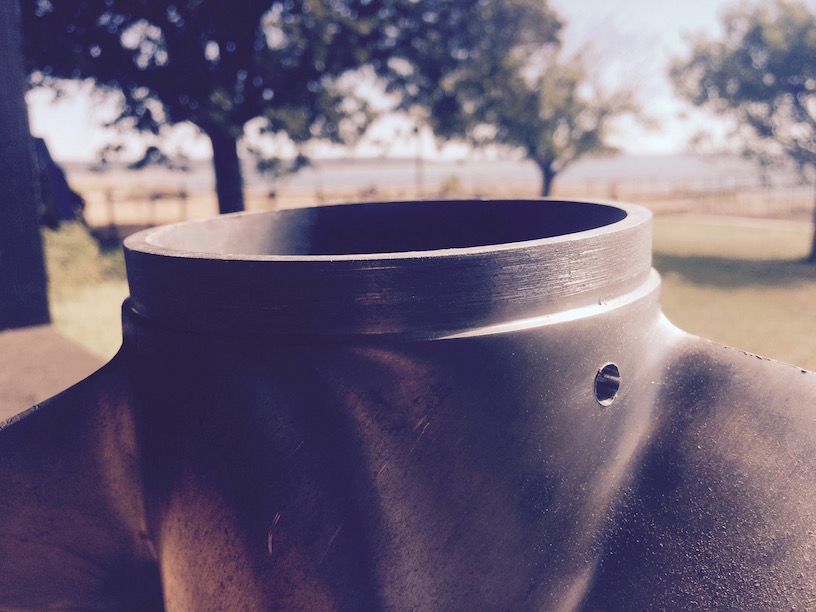If you love your boat(s!) as much as I do, you probably want them to go faster. Or get up on plane faster. Well, that funny-looking thing stuck on the bottom of your motor is pretty important to how your boat operates. So important, you could write books about it. Well, people already have- my ‘go to’ favorite is “The Propeller Handbook: The Complete Reference for Choosing, Installing, and Understanding Boat Propellers” by Dave Gerr.
I just finished my most recent boat construction project- a 13′ 7″ twin-sponson wooden hydroplane from a design penned in the 1960’s. On the back is a 45hp Mercury Classic Fifty (chosen not only for low weight, but also because it’s block is shared with the 44xs motor used in Class D hydro racing- a motor I dream about owning for this boat).
I was in the quest for a 45+mph top speed and I knew that I was in for a challenge. Once it was in the water, I was able to get 29mph almost immediately. A long way from the goal of 45+! Holeshot was about 4.5secs to a planning speed of around 11mph (yup, that low).
I evaluated and made a list of several things to try in my quest for improving speed. Being able to have sets of accurate measurements taken for each option was critical to evaluating and seeing real results. That’s where PowerboatGuy’s Holeshot Analyzer and speedometer were key to capturing real results and affording a comparison of my options.
But I digress- this blog is about the prop. For this boat & motor combo I started with a 3 blade aluminum prop- 10 1/2″ in diameter with a pitch of 11″. Pretty much standard. After trimming the motor up (manually- remember, I’m saving weight here!) and moving some dead weight around the boat (fuel, battery), I was able to get 34mph with a holeshot just under 4secs. Much better, but not 45+mph!
Next step: a larger pitch prop. From a set of calculations, along with a max rpm range between 5500 and 6000 rpm, I could see that a 17″ pitch prop could theoretically get over 45mph. But, at 45hp, this motor likely doesn’t have the grunt to keep the revs at even near 5000 with that prop. So my next step was a 13″ pitch prop. Now, a stainless steel prop has better performance in general over an aluminum one- but since I was still testing, I went with an aluminum (cheaper) one. Results: 40mph. But, the holeshot time was back at a little over 4 secs. OK- getting closer. Maximum rpms down from 5600 to 5250.
My next steps: get the rpm’s back closer to 5500. Motor tuning time! The 45mph will be pretty close.

Now, I’ve just been experimenting with pitch and trim. There are lots of other things that can be done that are strictly propeller related. Number of blades (maybe moving from 3 to 2). Trying out a 17″ pitch prop. On an old SeaRay Seville I have, in order to improve the holeshot when towing a waterskier, I resorted to drilling holes in the prop in order add a little ventilation around the prop in order to get the engine into its torque band. Like I said- lots of options.
Tuning your boat is an art -and- a science. Not to mention loads of fun. Just make a plan, try your options and record your results so that you can do realistic comparisons.
That 45mph bogey is in sight!
No comments yet.